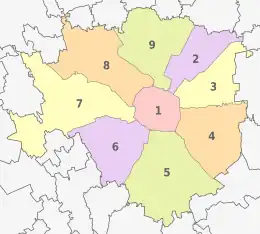
Milan is divided into nine municipalities (Italian: municipi or zone; known as zone di decentramento, "decentralization zones" from 1999 until 2016). They are numbered from 1 to 9. The organization was established in 1997, implemented in 1999 and reformed in 2016; prior to that the city was divided into 20 administrative zones.
Borough Councils
Each Municipality has a local government called Consiglio di Municipio (Borough Council). Every Council is composed of a President and 40 members for boroughs exceeding 100,000 inhabitants or 30 members for smaller ones.[1]
While the 1997 plan was intended to ascribe several rights and functions to borough councils, this has been largely unattended, so that borough councils have, in practice, little power and few duties.[2] Some of the actual functions of borough councils are:
- expressing opinions on urbanistic and social issues such as public works, town planning, maintenance of green spaces, regulamentation of street markets. These opinions are not binding for the higher level city government.
- managing funds (if any) provided by the city government for specific purposes, such as those intended to guarantee the right to education for poorer families.
After the 2016 administrative reform, the Borough Councils are also responsible for most local services, such as schools, social services, waste collection, roads, parks, libraries and local commerce.[3] Moreover, the Presidents are no longer elected by the Councils members but directly by the voters; for the current legislature (2021–26) the Presidents are:
| Municipality | President | Party | Votes | % | Mayoral majority | ||
|---|---|---|---|---|---|---|---|
| 1 | Mattia Abdu | PD | 23,017 | 62.5 | |||
| 2 | Simone Locatelli | PD | 26,427 | 55.7 | |||
| 3 | Caterina Antola | PD | 32,477 | 58.2 | |||
| 4 | Stefano Bianco | Ind[lower-alpha 1] | 30,262 | 54.9 | |||
| 5 | Natale Carapellese | PD | 22,938 | 54.7 | |||
| 6 | Santo Minniti | PD | 30,311 | 58.5 | |||
| 7 | Silvia Fossati | Ind[lower-alpha 2] | 31,747 | 53.5 | |||
| 8 | Giulia Pelucchi | PD | 36,140 | 57.0 | |||
| 9 | Anita Pirovano | Ind[lower-alpha 3] | 31,661 | 53.8 | |||
- Notes
- ↑ Elected at the head of the centre-left alliance.
- ↑ Elected at the head of the centre-left alliance.
- ↑ Elected at the head of the centre-left alliance.
The nine boroughs
With the exception of Municipio 1, which corresponds to the historical city centre (defined as the part of the city that used to be surrounded by the old Spanish walls, now mostly demolished), the boroughs are organized in a sunburst pattern, and numbered from the north-east zone clockwise (see picture above). While boroughs are mostly referred to by number, each borough also has an official name, usually a list of its main districts or areas.
Current boroughs are described in the table below, along with their names, area and population (as of 1 January 2022), as well as a list of the main districts comprising each zone. Note that districts (quartieri) are informal (they are not administrative divisions).[4]
| Municipality | Map | Name | Area (km2) | Population (2022) | Population density (inhabitants/km2) | Quartieri (districts) |
|---|---|---|---|---|---|---|
| 1 |  | Centro storico | 9.67 | 97,897 | 11,074 | Brera, Centro Storico, Conca del Naviglio, Guastalla, Porta Sempione, Porta Tenaglia |
| 2 |  | Stazione Centrale, Gorla, Turro, Greco, Crescenzago | 12.58 | 160,873 | 13,031 | Adriano, Crescenzago, Gorla, Greco, Loreto, Maggiolina, Mandello, Mirabello, Ponte Seveso, Porta Nuova, Precotto, Stazione Centrale, Turro,, Villaggio dei Giornalisti |
| 3 | 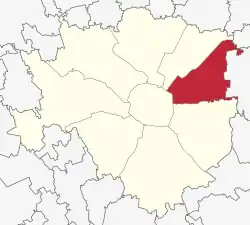 | Città Studi, Lambrate, Porta Venezia | 14.23 | 142,726 | 10,785 | Casoretto, Cimiano, Città Studi, Dosso, Lambrate, Ortica, Porta Monforte, Porta Venezia, Quartiere Feltre, Rottole |
| 4 |  | Porta Vittoria, Forlanini | 20.95 | 160,679 | 8,069 | Acquabella, Calvairate, Castagnedo, Cavriano, Forlanini, Gamboloita, La Trecca, Monluè, Morsenchio, Nosedo, Omero, Ponte Lambro, Porta Vittoria, Porta Romana, Rogoredo, San Luigi, Santa Giulia, Taliedo, Triulzo Superiore |
| 5 | 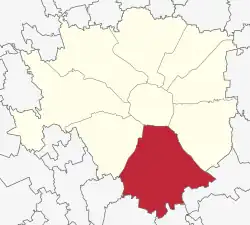 | Vigentino, Chiaravalle, Gratosoglio | 29.87 | 124,094 | 4,487 | Basmetto, Cantalupa, Case Nuove, Chiaravalle, Chiesa Rossa, Conca Fallata, Fatima, Gratosoglio, Le Terrazze, Macconago, Missaglia, Morivione, Porta Lodovica, Porta Vigentina, Quintosole, Ronchetto delle Rane, San Gottardo, Selvanesco, Stadera, Torretta, Vaiano Valle, Vigentino |
| 6 |  | Barona, Lorenteggio | 18.28 | 150,159 | 8,998 | Arzaga, Barona, Boffalora, Cascina Bianca, Conchetta, Creta, Foppette, Giambellino-Lorenteggio, Lodovico il Moro, Moncucco, Porta Genova, Porta Ticinese, Ronchetto sul Naviglio, San Cristoforo, Sant'Ambrogio, Teramo, Villa Magentino, Villaggio dei Fiori |
| 7 | 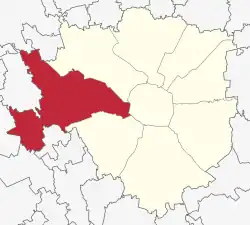 | Baggio, De Angeli, San Siro | 31.34 | 173,791 | 6,093 | Assiano, Baggio, Figino, Fopponino, Forze Armate, Harar, La Maddalena, Muggiano, Porta Magenta, Quartiere degli Olmi, Quarto Cagnino, Quinto Romano, San Siro, Valsesia, Vercellese |
| 8 | 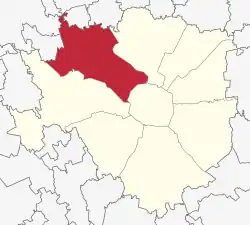 | Fiera, Gallaratese, Quarto Oggiaro | 23.72 | 190,059 | 8,326 | Boldinasco, Bullona, Cagnola, Campo dei Fiori, Cascina Triulza, Chinatown, Comina, Fiera, Gallaratese, Garegnano, Ghisolfa, Lampugnano, Musocco, Porta Volta, Portello, Quarto Oggiaro, QT8, Roserio, San Leonardo, Trenno, Varesina, Vialba, Villapizzone |
| 9 |  | Porta Garibaldi, Niguarda | 21.12 | 186,007 | 9,204 | Affori, Bicocca, Bovisa, Bovisasca, Bruzzano, Ca' Granda, Centro Direzionale, Comasina, Dergano, Fulvio Testi, Isola, La Fontana, Montalbino, Niguarda, Porta Garibaldi, Porta Nuova, Prato Centenaro, Segnano |
| 181.76 | 1,386,285 | 8,164 | ||||
Footnotes
- ↑ (in Italian)Regolamento del decentramento territoriale, approvato dal Consiglio comunale con deliberazione n. 26 del 1997; art. 3
- ↑ (in Italian)Regolamento del decentramento territoriale, approvato dal Consiglio comunale con deliberazione n. 26 del 1997; Titolo V
- ↑ Municipality of Milan - Municipalities
- ↑ (in Italian)Statistiche dal sito del Comune di Milano Archived July 29, 2007, at the Wayback Machine
External links
 Media related to Municipi of Milan at Wikimedia Commons
Media related to Municipi of Milan at Wikimedia Commons